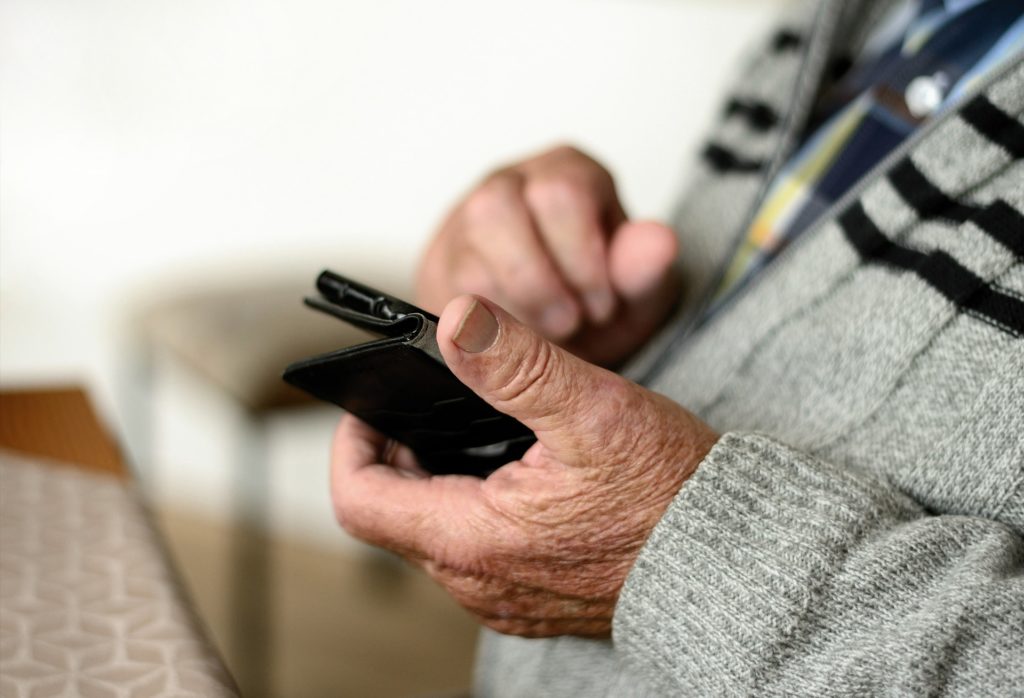Telehealth use continues to expand in hospice care as providers find new ways to connect with patients and families from a distance during the coronavirus pandemic. The first priority for hospices was adapting telehealth to address patients’ medical needs, but they have moved on to broaden the scope to include a variety of interdisciplinary services.
To help hospices cope with the pandemic, the U.S. Centers for Medicare & Medicaid Services (CMS) waived certain hospice regulations to allow for increased use of telehealth, including for routine home care visits and face-to-face recertifications. While this aided hospices as they strived to meet patient’s medical needs in unprecedented circumstances, providers were still challenged in providing other supportive services so vital to quality care for patients and families.
“Hospice care is fundamentally based on the interdisciplinary team model,” said Sara Dado, senior director of clinical programs at Joliet Area Community Hospice. “Yet many of our support staff have been sidelined during this pandemic, including social work, chaplains, music therapy, massage therapy and the crucial support of our hospice volunteers.”
CMS in late April announced that providers were able to use telehealth across all professional disciplines involved in the full scope of interdisciplinary hospice services during the COVID-19 outbreak. Even prior to the announcement, several hospices were navigating remote ways to continue programs such as social work, group and individual therapies, spiritual support and bereavement care.
“We pretty much transitioned in the middle of March to doing our groups via conference call,” said Willis Partington, lead bereavement counselor for Visiting Nurse Service of New York (VNSNY) Hospice and Palliative Care. “People are just so grateful to still be able to be in touch with each other and kind of reconnect on a different level.”
Serving the five boroughs of New York City, VNSNY has felt the impact of the pandemic in a hard-hit area of the country, with staff and patients alike losing loved ones to the novel coronavirus, as Partington shared with Hospice News. Similar to many hospices nationwide, VNSNY has increasingly used video conferencing in its hospice segment to continue supportive services such as mindfulness workshops, bereavement support groups for patients and virtual sound bath sessions, or sonic therapy, to help staff and frontline workers cope with the stresses resulting from the pandemic.
“In a way, telehealth has kind of been spreading the geographic reach in unanticipated ways,” said Partington. “We have people calling into group calls not just within our immediate service areas in New York, but from several different states and less-populated areas. It allows us to support those who might not have support around them and try to connect them with resources or referrals. Social distancing might be changing the geography of this kind of care, but we want to structure offerings for them that are accessible while they face a difficult time and the end of their loved ones’ lives and after.”
Telehealth has allowed for remote delivery of spiritual guidance from chaplains, mental health care with complimentary therapies involving music, yoga and meditation, or connection to bereavement groups when a loved one passes.
Even with the benefits of connectivity, technology can raise new challenges for both providers and patients. With increased telehealth use comes an array of technical issues, including slow or disrupted online connections, time restraints for video calls on platforms such as Zoom, and difficulties in learning new technologies among older patient populations who don’t have assistance readily available due to social distancing measures.
“We’re still in the process of finding our way and figuring out what platforms work best for different services,” Partington said. “It depends on that particular group or workshop and the population involved, what they’re most comfortable with in terms of access and usage. We even have group members themselves helping to provide tech help for those less savvy. Video groups can also be a format for different resources online, like food deliveries, online shopping tip sharing, virtual video tours of museums, which can all be essential to those in the high-risk category practicing social distancing. This era where all things can happen live on a mic or on camera really brings a whole different level of challenges, but also a different level of connectivity.”
While telehealth has allowed hospices to continue making valuable connections to patients and families through supportive services, utilization during the pandemic has not replaced the crucial element of human interaction in care.
“Although it is not ideal for something as personal as end-of-life care, telehealth allows us to stay connected to our patients and families in a real-time way,” Dado said. “It is helping us to remain compliant under the revised rules and fulfills the requirements needed to secure reimbursement. Telehealth is encouraged as much as possible to minimize in-person contact and reduce risk to staff and patients.”
Companies featured in this article:
Joliet Community Hospice, Visiting Nurse Service of New York (VNSNY)



